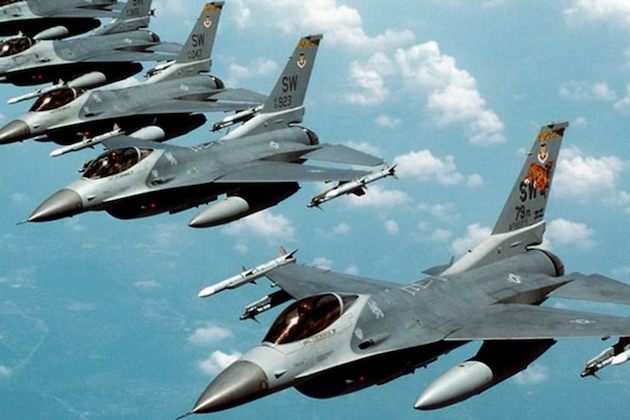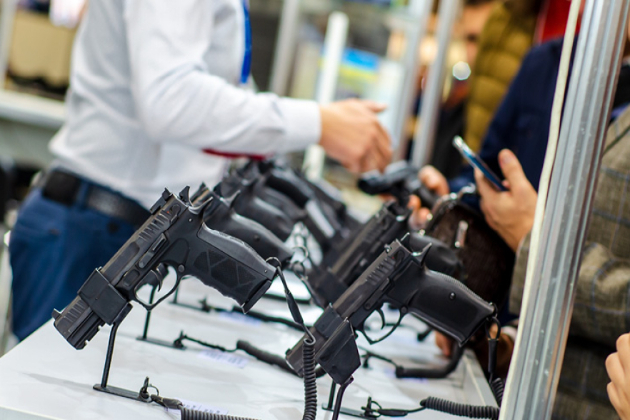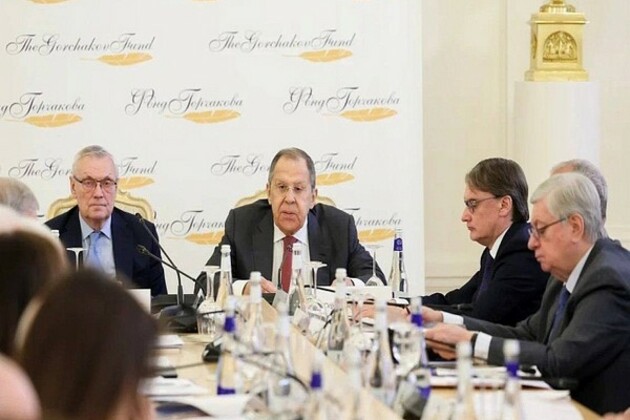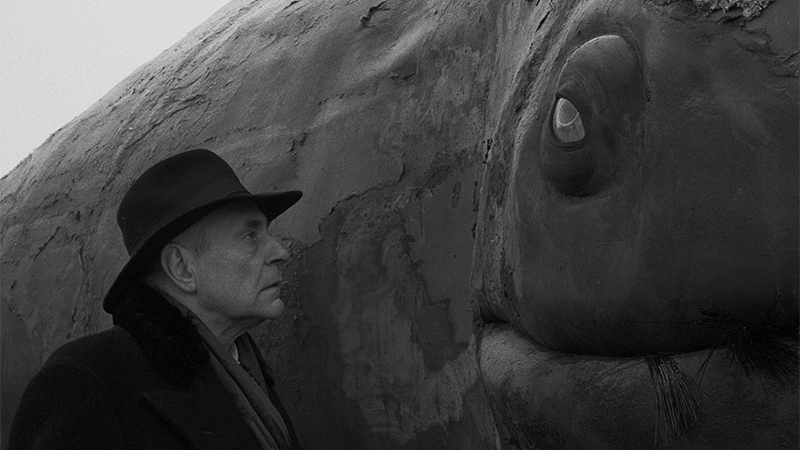Kosovorotka: How this essential Russian shirt came about
RBTH
29 Sep 2020, 19:24 GMT+10

Culture Sept 29 2020 Alexandra Guzeva
L: Famous Soviet writer Maxim Gorky wearing kosovorotka, R: kosovorotka nowadays
Legion Media; Gallen-Kallelan Museo Kosovorotka shirts were worn in Russia by men, women - and even babies. So what's the secret behind this 'magical' traditional Russian garment?
Present-day fashion bloggers and designers would describe the kosovorotka as a wardrobe essential. In other words, it can be worn pretty much every day, as a plain T-shirt, just changing accessories and combinations with other garments.
What many do not know is that the kosovorotka formed the basis of the simple wardrobe of any Russian peasant from the 15th to the early 20th century. It also served as an undergarment for all other clothes.
What is it exactly?
The kosovorotka is essentially a long-sleeved shirt. Peasants usually wore plain white linen shirts. They were always worn untucked and belted with a rope. There were kosovorotkas for every day and for festive occasions, the latter usually having an embroidered collar. For a smarter look on festive occasions, the rope could be replaced with a beautiful belt, for example, with tassels.
A Russian carpenter, late 19th century
Volkov/MAMM/MDF
In summer, a kosovorotka was worn on its own, however, indoors, a vest could be put over it. In winter, it was worn under a caftan. Well-off people could afford kosovorotkas for special occasions made from more expensive fabrics, like silk or satin.
Women often wore floor-length kosovorotkas, whose hems and sleeves usually stuck out from under their sarafans, which were worn over them. Peasant women had a variety of shirts for different occasions: there were different kosovorotkas for unmarried girls, for brides, as well as for married women. For holidays and funerals too, a separate shirt was required, with intricately embroidered cuffs and collars. The patterns on them had a special symbolic meaning.
Children in the Siberian city of Irkutsk, the 1890s
Vladimir Sukachev/MAMM/MDF
Even babies were dressed in kosovorotkas, with their parents' old shirts converted into diapers.
What are the origins of the word 'kosovorotka'?
The name of the shirt comes from the phrase kosoy vorot (косой ворот), meaning a "skewed collar". Indeed, the collar and the slit on the kosovorotka is not in the center, but slightly on the side, usually to the left from the center. According to culturologist and academician Dmitry Likhachev, the reason for it was practical rather than aesthetic: That way, cross pendants that peasants wore under their shirts would not fall out when they bent down during active physical labor.
Russian peasants in kosovorotkas
Fortepan (CC BY-SA 3.0)
After the Bolshevik Revolution, wearing a cross was no longer expected - in fact it was frowned upon - so kosovorotkas lost their relevance.
How the kosovorotka evolved into a soldier's tunic
The kosovorotka became a prototype for another popular shirt, the gymnastyorka, a "soldier's tunic".
Nicholas II wearing gimnastyorka (pictured under the convoy, exiled after the Revolution)
MAMM/MDF
In 1880, soldiers in the Turkestan military district of the Russian Empire were issued with summer kosovorotkas for doing their physical exercises in the heat. Later, those kosovorotkas shoulder straps were added to them. This type of tunic became widespread during World War I, the Revolution and the Civil War in Russia.
Yuri Gorelov. Do Russians Want War? 1962
Gorelov Y.G.(CC BY-SA 3.0)
Gymnastyorkas were worn by Cossacks, cavalrymen, as well as troops serving in the south. A shoulder belt was worn over it. It's worth noting, however, that on soldier's tunics, the collar was often centered.
Tolstoy and other fans of the kosovorotka
Russian aristocrats and members of the nobility in the 18th-19th centuries did not wear kosovorotkas, but used collarless shirts as underwear instead. Perhaps the only exception was Count Leo Tolstoy, who wanted to emphasize his closeness to the common people: at his Yasnaya Polyana estate, he wore a tunic, albeit with a slit in the middle. In English, a kosovorotka is often translated as a 'Russian peasant shirt' or a 'Tolstoy shirt'.
Leo Tolstoy wearing his famous shirt. Yasnaya Polyana, 1903
Franz Protasevich/L.N. Tolstoy State Museum
In later years, long, loose shirts with pockets, like those worn by Tolstoy, began to be called tolstovkas. However, since then the meaning of this word in Russia has changed and these days a tolstovka means a 'sweatshirt' or a 'hoodie'.
Incidentally, it was in the same, semi-fancy-dress sense that poet Sergei Yesenin used to wear kosovorotkas: he sought to create the image of a peasant poet and dressed up especially to impress literary figures in the capital.
'Peasant poets' Nikolai Klyuev and Sergei Yesenin (R) in Petrograd (current St. Petersburg), 1915
Public domain
The Hollywood classic Doctor Zhivago is still criticized in Russia for its simplistic stereotyping of things Russian.
Omar Sharif as Yuri Zhivago
David Lean/MGM; Carlo Ponti Productions, 1965
For instance, in it Zhivago, played by Omar Sharif, is dressed in a kosovorotka, which was no longer worn at the time of the Civil War in Russia.
 Share
Share
 Tweet
Tweet
 Share
Share
 Flip
Flip
 Email
Email
Watch latest videos
Subscribe and Follow
Get a daily dose of Irish Sun news through our daily email, its complimentary and keeps you fully up to date with world and business news as well.
News RELEASES
Publish news of your business, community or sports group, personnel appointments, major event and more by submitting a news release to Irish Sun.
More InformationInternational
SectionNew York court blocks law allowing over 800,000 non-citizens to vote
NEW YORK CITY, New York: New York State's highest court has struck down a law this week that would have allowed over 800,000 legal...
40 times more people killed in Gaza than in the 7 October attack
The death toll in Gaza on the weekend has passed 50,000, local health authorities have reported. What started the carnage was the Hamas-led...
USDA pledges $100 million for bird flu research, vaccine development
WASHINGTON, D.C.: The U.S. Department of Agriculture (USDA) has announced plans to invest up to US$100 million in research to develop...
US HHS orders removal of gun violence public health advisory
WASHINGTON, D.C.: The U.S. Department of Health and Human Services (HHS) has removed a 2024 advisory from its website that called gun...
Regulatory hurdles may leave US behind China in autonomous tech
WASHINGTON, D.C.: Industry leaders are pushing the Trump administration to clear regulatory obstacles slowing the rollout of self-driving...
Israeli forces accused of deadly cruelty against Gazan hospital patients
NEW YORK, New York – Israeli military forces caused deaths and unnecessary suffering of Palestinian patients while occupying hospitals...
Europe
SectionFinance minister warns trade war could hurt Ireland’s economy
DUBLIN, Ireland: Ireland's Finance Minister Paschal Donohoe has warned that an escalating trade war between the European Union and...
Ireland climbs to 15th in World Happiness rankings
DUBLIN, Ireland: Ireland has risen two places to become the 15th happiest country in the world, according to the World Happiness Report...
EU to cut steel import quotas by 15% to counter US tariff fallout
BRUSSELS, Belgium: The European Union is set to tighten steel import quotas starting in April, reducing inflows by 15 percent to prevent...
Ireland’s property prices surge 8.1% in a year, CSO reports
DUBLIN, Ireland: Ireland's property prices continued their upward trend, rising by 8.1 percent in the 12 months leading to January...
Audi to cut 7,500 jobs in Germany by 2029 in cost-cutting move
BERLIN, Germany: Audi has announced plans to cut up to 7,500 jobs in Germany by 2029 as part of a broader restructuring aimed at reducing...
Russia developing "privileged strategic partnership" with India; expanding ties with major global states: Lavrov
Moscow [Russia], March 25 (ANI): Russia is actively expanding ties with the majority of global states, including India with whom Moscow...













